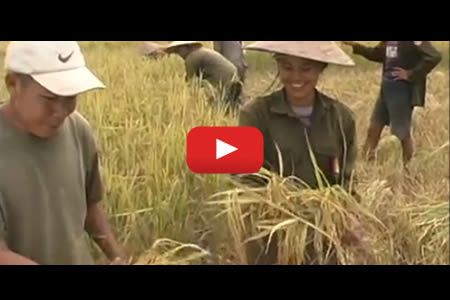Checklist for creating impact
Why an Impact Checklist?
Impact has to be planned and while specific requirements vary based on the technology involved, the target group characteristics and the partners involved, some generic steps have been identified. These steps are captured within the following diagram.

|
I. Pre-project |
|
| a. Identify region in response to demand or perceived opportunity | |
| b. Evaluate potential for impact (agricultural, institutional and political context) | |
| c. Identify potential partners and likely project driver; develop a strong relationship | |
| d. Plan process from needs assessment right through to scaling-up and M&E | |
| e. Establish benchmarks for collaboration with partners | |
|
II. Needs assessment - with project drivers and collaborators |
|
| a. Select and characterize target sites and zones for survey | |
| b. Stakeholder analysis (communication network analysis) | |
| c. Field and farmer visits to identify problems, root causes and possible options | |
| d. Conduct baseline survey (identify indicators of impact) | |
| e. Select options for validation and/or gaps for research | |
|
III. Research (where gaps identified) |
|
| Ensure new technology matches farmers' needs and priorities | |
|
IV. Capacity Building - with project driver and collaborators |
|
| a. Train partners/collaborators in the technology | |
| b. Train partners/collaborators in participatory research | |
|
V. Validation - with project driver and collaborators |
|
| a. Define parts of region and potential technology matches | |
| b. Identify target communities | |
| c. Identify and contact potential partners collaborators | |
| d. Visit/meet with farmers to plan demonstrations and select participants | |
| e. Choose options and sites with farmers | |
| f. Train farmers | |
| g. Establish sites | |
| h. Visit and evaluate fields | |
| i. Field days and/or farm walks - farmer-farmer awareness raising | |
| j. Collect farmer feedback, record adaptations, identify further opportunities | |
| k. Adapt technologies if necessary and conduct further field-testing | |
| l. Evaluate partnerships | |
|
VI. Scaling-up - with project driver and collaborators |
|
| a. Check availability of both required inputs and markets for product surplus. | |
| b. Identify target zones for expansion (needs assessment, baseline survey). | |
| c. Re-assess partnerships and identify other key stakeholders. | |
| d. Distill and package farmer-preferred technologies. | |
| e. Understand your target audience and their communication networks. | |
| f. Establish a communication campaign committee. | |
| g. Design and plan a communication campaign (e.g., a message design workshop). | |
| h. Design, adapt, produce, and test multimedia communication materials. | |
| i. Initiate campaign and distribute materials. | |
| j. Monitor and evaluate information diffusion and technology adoption. | |
|
VII. Monitoring and Evaluation - with project driver and collaborators |
|
| a. Post-intervention surveys | |
| b. Field day evaluations | |
| c. Record lessons learned in all aspect of research-impact continuum | |
| d. Assess impact against benchmark surveys and project goals | |
| e. Develop and implement exit strategy | |
| f. Document and disseminate outputs to scientific and development communities | |







